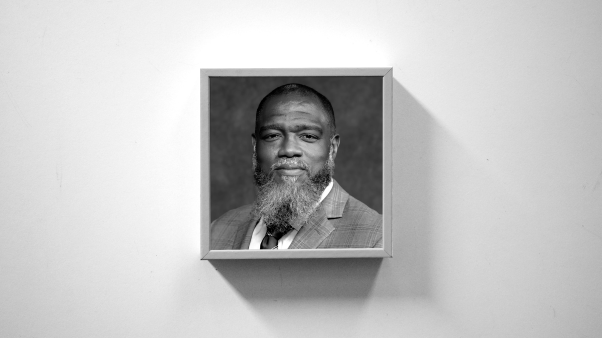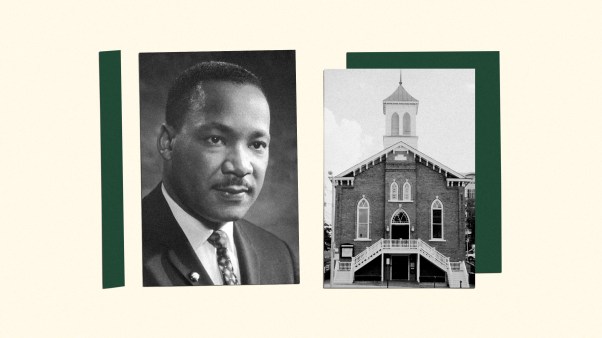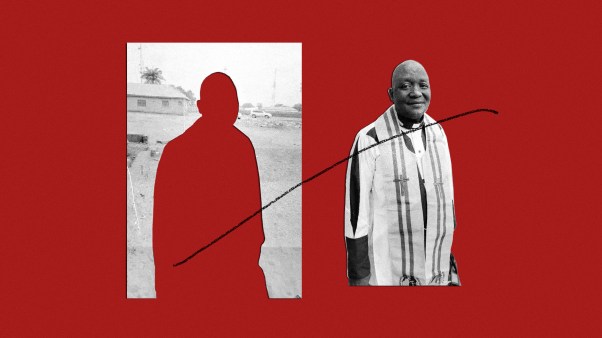Spiritualism, which had its heyday in the latter half of the nineteenth century, is having a surprising revival in North America. Hundreds of so-called spiritualist churches regularly engage in healing sessions, led by mystics who claim to transmit “spirit messages.” Scores of summer camps implement church programs. Publications such as Psychic Observer and Tomorrow work hand-in-hand with the American Society for Psychic Research, promoting “scientific proof” of the reality of psychic phenomena. In March, 1956, a group of American ministers, missionaries, and lay leaders organized the Spiritual Frontiers Fellowship, patterned after the British Churches Fellowship for Psychical Research, “to sponsor, explore and interpret the growing interest in psychic phenomena and mystical experience within the church, wherever these experiences relate to effective prayer, spiritual healing, and personal survival.” It claims Christian origin and interfaith scope.
Focal point of spiritualism is the seance, ostensible counterpart of a religious service, led by a medium, an individual “gifted” with psychic powers. The medium lapses into a trance which supposedly enables him to contact spiritual forces and to act as speaking intermediary between these forces and other participants in the séance.
Nineteenth-century pioneers of spiritualism like Conan Doyle, with his photographs of ectoplasm, Oliver Lodge and Flammarion had almost faded from memory when mediums like Eileen Garrett, Edgar Cayce, Alice A. Bailey and Arthur Ford revived it. Today spiritualism surrounds itself with a scientific aura and takes advantage of the widespread interest in parapsychology, or ESP (extra-sensory perception).
In Parapsychology, Dr. J. B. Rhine, leading American scholar in this field, cautiously wrote: “It should from the very beginning be made clear that the phenomena with which parapsychology deals are all, without exception, events of nature. In other words, the field of problems belongs entirely to natural science.” But in a subsequent paper, “What Next in Parapsychology?,” which Dr. Rhine contributed to Eileen Garrett’s anthology Beyond the Five Senses, he not only contradicts this statement but attempts (a mistake many others have made before him) to explain religion scientifically. “Religion is, of course, the most immediate area of application for parapsychology. Defined as the investigation of non-physical operations in nature and the principles governing them, parapsychology would have to lay claim to many of the more fundamental problems of religion.” If this were true, then the spiritual experiences of the prophets and apostles would have been nothing more than early instances of ESP. However, the contrast between modern parapsychology experiments and the insights of eminent Christians would strongly militate against this claim.
To explain religion simply in terms of ESP is to do a disservice to both. ESP is not synonymous with religious-spiritual phenomena such as the visions experienced by biblical figures. There is a great temptation to explain spiritual phenomena scientifically, but man has no scientific tools to investigate supernatural phenomena.
Dr. Rhine concedes that ESP has floundered in its attempt to solve the paramount question of the survival of the soul. “The investigation of the survival question,” he says, “has already been a prominent part of parapsychology’s history. For a period of fifty years, extending from the eighties into the twenties, it almost eclipsed and excluded every other interest in the field. Nor was the enthusiasm and activity that was generated entirely emotional and uncritical. Some of the ablest scholars of the times were active in the guidance, conduct and interpretation of the studies that were made to focus the issue and establish a conclusion. Eventually, however, with the development of increased emphasis on the necessary precautions, the status of the survival hypothesis became more and more uncertain, and the issue remained inconclusive. Decision on the question had to be left a matter of individual choice and not the necessary result of conclusive scientific proof.” This leaves the question exactly where it has always been. Baron Schrenck-Notzing, the great German pioneer of parapsychology, did not fall into this trap but steered clear of religious problems. “The soul is like a bubble upon the ocean,” he observed. “Bubbles appear and reappear. Who can say that it is the same bubble? I am not a spiritualist. I am a Parapsychologist.” ESP does not deal with spiritual forces in the traditional religious sense, but seeks to deal with human forces shrouded in mystery.
One must be careful, moreover, to distinguish both ESP and spiritualism from authentic religious experiences. So-called psychic phenomena and religious experiences are two different categories, the former is based on human probing, the latter on God’s saving revelation in Jesus Christ.
The term “spiritual experience” is used to cover a wide variety of phenomena. There is a striking contrast between the experiences of men who received the biblical revelation and those of modern seekers after psychic “messages.” The prophets and apostles were chosen—they did not choose. They did not try to crash the uncharted realms of the infinite with the help of mediums or ouija boards, nor did “spirit guides” reveal to them the fate of an Uncle Harry or Aunt Emma, or discuss the origin of their aches and pains. Although necromancy (to use the classic term for intercourse with spirits) accompanies the history of all higher religions, it has always been understood as a crooked path fraught with dangers for its practitioners. Spiritual apparitions such as Paul experienced on the road to Damascus are born of God’s love for man, while necromancy is born of less lofty motives. God spoke to man through Old Testament prophets and through Christ for the sake of humanity. Those who desire to consort with so-called entities are not motivated by such all-encompassing love. But more important, their chief concern is not with God’s will as it is revealed in Christ.
There are a few today who would deny that the cosmos is throbbing with life. And who would limit life to that which is seen? Neither Judaism nor Christianity deny the existence of spirits. King Saul consulted the witch of Endor who evoked the spirit of Samuel for him, although necromancy and witchcraft were forbidden (Lev. 19:31; Deut. 18:11). Christ exorcised evil spirits on many occasions, but in the case of the epileptic son (Mk. 9:14–27) not even his disciples could drive out the spirit but only he himself (Mk. 9:28–29). There may be demons and angels, good and bad spirits, but they exist in a realm extraneous to ours, with which man should not tamper. Paul spoke of vast realms, thrones, dominions, principalities and authorities (Col. 1:16), but he warned of a danger few present-day spiritualists are willing to recognize, that “even Satan disguises himself as an angel of light” (2 Cor. 11:14). Christianity traditionally discouraged intercourse with spirits, not because it doubted their existence, but because such was understood to be contrary to the counsel of God, the eternal Spirit.
ESP conducts experiments with cards or dice and employs statistical methods of evaluation. Spiritualists, on the other hand, employ entirely subjective methods to achieve contact with entities, such as table-tipping, automatic writing and the planchette, or ouija board. The most ancient method known is that of a medium, a person gifted with psychic powers, who goes into a trance, or catatonic sleep. In this state his conscious mind and free will are suspended. His body then is used by the entity who speaks through his voice box. The entity assumes a proper name for identification purposes and answers questions directed to it by people other than the medium who is asleep. Neither the medium nor the participants at a seance can possibly be sure of the origin, quality and intent of the entity.
Mr. David H. Cole, a young Universalist minister of wide intellectual interests, recently attended a séance in Chicago conducted by Mr. Ford, the famous trance medium, for a gathering of ten ministers. Through the voice of Mr. Ford an entity calling himself “Fletcher” addressed the gathering on topics uppermost in their minds. The remarks of this entity, however, were so general and platitudinous that nothing could be derived of either a practical or inspirational value. This is symptomatic of most séances, particularly those approached from a devotional angle. Those who wait with bated breath for new revelations in spiritistic séances do not have a “ghost of a chance.”
That mediums have stunned many people with knowledge of intimate details of their lives is well known. There is a faculty at work of which we know nothing as yet. The spiritistic hypothesis, while not entirely ruled out, has, however, one great inherent weakness. In his autobiography Nothing So Strange, written in collaboration with Margueritte Harmon Bro, Mr. Ford wrote that entities appearing at a séance are “loved ones of the sitter,” thus explaining the intensely personal and subjective nature of the material received. But many communications from so-called spirit guides contradict experience (such as their claim of reincarnating) and they pervert the teachings of Christianity with a sentimental relativism indicating a background in eastern occultism and metaphysics on the part of the mediums. But Paul warned: “… even if we, or an angel from heaven, should preach to you a gospel contrary to that which we preached to you, let him be accursed” (Gal. 1:8).
Prayer is resorted to rarely by professional mediums. In prayer the mind and the emotions, in short, the whole consciousness of the individual, is at a higher pitch, which automatically cancels out the possibility of an entity taking control of the body. On the contrary, during the Middle Ages and before, prayer was used as an effective protection against spirits and demons. Psychic research has shown that an entity cannot manifest without some cooperation by the medium and the means he provides, such as nervous energy (mediums are usually utterly exhausted after a séance), his voice to speak with, or his hands to write with. As every seasoned psychic investigator knows, it is more often that the entity seems to need help rather than the person who appeals to it. The Roman Catholic doctrine of Intercession is based upon the belief in the survival of the soul. But even the saints cannot help directly those who pray to them, but intercede for them with Christ.
Those who desire “proof” of the survival of the soul too readily accept the claims of any entity (or medium) to be their deceased relative. The messages received during séances are so subjective that it is wiser to maintain an attitude of extreme caution toward all claims of having communed with a specific entity. The powers of the subconscious are as yet too little known and it is therefore quite possible that in most alleged communications from a recently deceased person the desire to speak with him again prompted the phenomena. Schrenck-Notzing came to this conclusion after a lifetime of studying parapsychology: “A medium may honestly believe that a spirit is manifesting itself through her or through him when, as a matter of fact, the manifestation is directed solely through a subdivision of her own ego in the subconscious.”
Spiritualism is the no-man’s land between ESP and authentic religious-visionary experiences. Its adherents have marshalled the theories of yoga, Zen, magic, theosophy, and Dr. Carl J. Jung for philosophical support, producing a pseudo-science and religious syncretism similar to Gnosticism. Instead of penetrating the mysteries of Christianity, spiritualists seem to be moving further away. One of the greatest gifts Christianity gave to mankind was freedom from dependence upon and fear of psychic forces. In the words of Paul, “Formerly, when you did not know God, you were in bondage to beings that by nature are no gods; but now that you have come to know God, or rather to be known by God, how can you turn back again to the weak and beggarly elemental spirits, whose slaves you want to be once more?” (Gal. 4:8–9).
The attempt to utilize the powers of entities or to communicate with them for selfish and petty ends is not only a denial of the potential of faith, but turns back the clock to a prehistoric level of religion when shamans and wizards ruled the life of their tribes with “familiars.” Christ chased demons and spirits out the front door—are they going to be let in again through the back? It remains to be seen what spiritualism will accomplish that deep faith cannot. Spiritualists are mystics without faith. Those who need phenomena to support their faith do well to recall Christ’s words to Thomas: “Blessed are those who have not seen and yet believe.”
Pace College, New York










